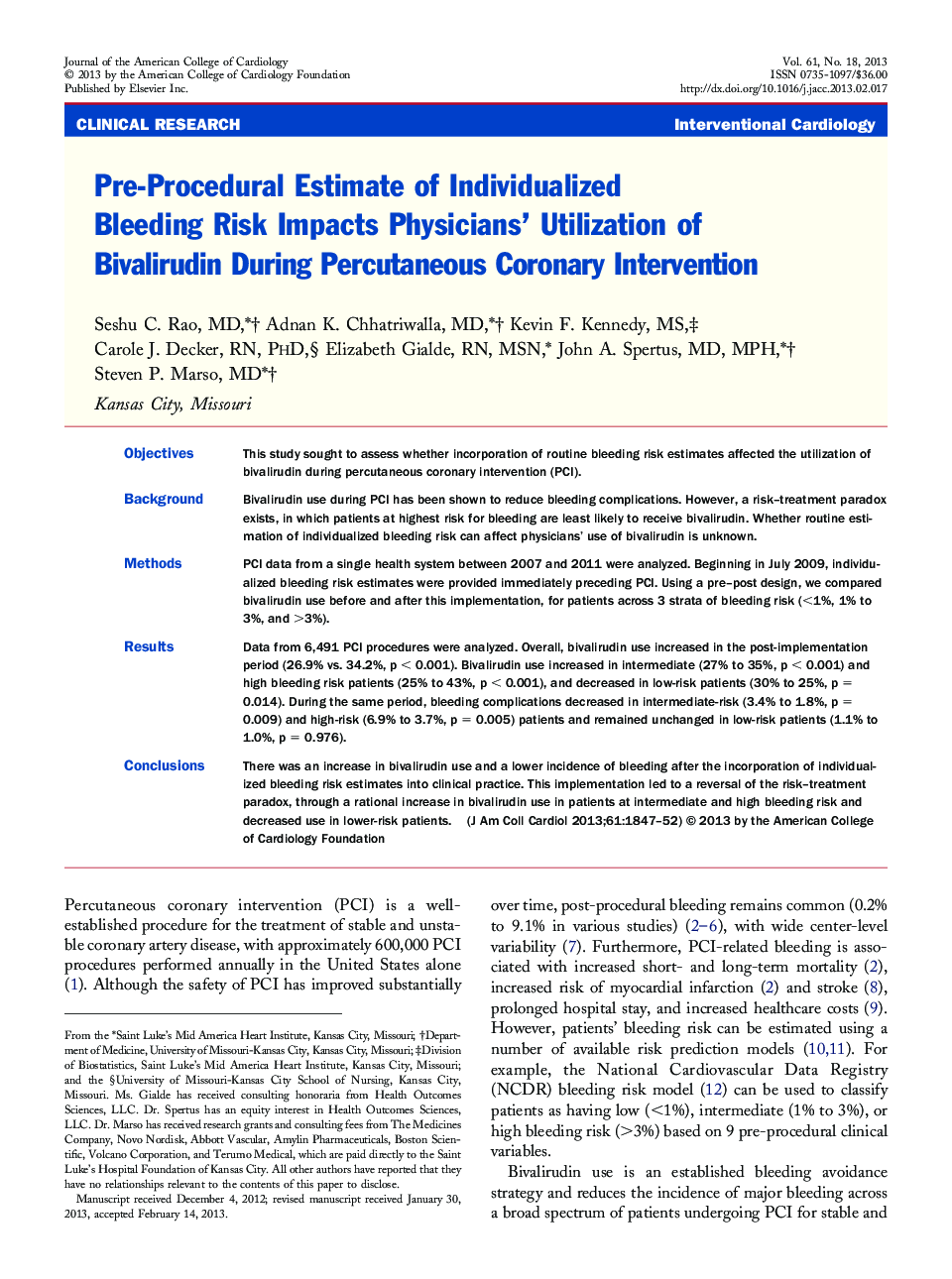| کد مقاله | کد نشریه | سال انتشار | مقاله انگلیسی | نسخه تمام متن |
|---|---|---|---|---|
| 2945685 | 1577160 | 2013 | 6 صفحه PDF | دانلود رایگان |

ObjectivesThis study sought to assess whether incorporation of routine bleeding risk estimates affected the utilization of bivalirudin during percutaneous coronary intervention (PCI).BackgroundBivalirudin use during PCI has been shown to reduce bleeding complications. However, a risk–treatment paradox exists, in which patients at highest risk for bleeding are least likely to receive bivalirudin. Whether routine estimation of individualized bleeding risk can affect physicians' use of bivalirudin is unknown.MethodsPCI data from a single health system between 2007 and 2011 were analyzed. Beginning in July 2009, individualized bleeding risk estimates were provided immediately preceding PCI. Using a pre–post design, we compared bivalirudin use before and after this implementation, for patients across 3 strata of bleeding risk (<1%, 1% to 3%, and >3%).ResultsData from 6,491 PCI procedures were analyzed. Overall, bivalirudin use increased in the post-implementation period (26.9% vs. 34.2%, p < 0.001). Bivalirudin use increased in intermediate (27% to 35%, p < 0.001) and high bleeding risk patients (25% to 43%, p < 0.001), and decreased in low-risk patients (30% to 25%, p = 0.014). During the same period, bleeding complications decreased in intermediate-risk (3.4% to 1.8%, p = 0.009) and high-risk (6.9% to 3.7%, p = 0.005) patients and remained unchanged in low-risk patients (1.1% to 1.0%, p = 0.976).ConclusionsThere was an increase in bivalirudin use and a lower incidence of bleeding after the incorporation of individualized bleeding risk estimates into clinical practice. This implementation led to a reversal of the risk–treatment paradox, through a rational increase in bivalirudin use in patients at intermediate and high bleeding risk and decreased use in lower-risk patients.
Journal: Journal of the American College of Cardiology - Volume 61, Issue 18, 7 May 2013, Pages 1847–1852